Considering selling a new product using Amazon FBA?
Then you need to accurately calculate your potential profit margins to determine the viability and potential success of your products. While the calculation seems simple (revenue – costs = profit), for Amazon sellers, working out those costs is a little more complicated.
The host of fees and costs associated with Amazon’s Fulfillment by Amazon (FBA) service can quickly turn what seems like a winning product into dud.
That’s why understanding how to calculate your Amazon FBA profit accurately is a critical step in building a sustainable and profitable online business.
By the end of this guide, you’ll understand Amazon’s FBA fee structure, how to estimate these fees accurately using their revenue calculator, and the other expenses that are crucial to consider when assessing a product’s potential profitability.
How Do Amazon Fees Work?
Joining the successful sellers on Amazon’s marketplace requires a keen understanding of its fee structure, which is as varied as the products you can sell, with each category coming with its own set of fees.
Essentially, Amazon charges either a referral fee as a percentage of the product’s sale price or a minimum fee – whichever is greater.
Here’s a snapshot of the current referral fee percentages, but bear in mind that these are subject to change. Always check the latest fee information to stay updated.
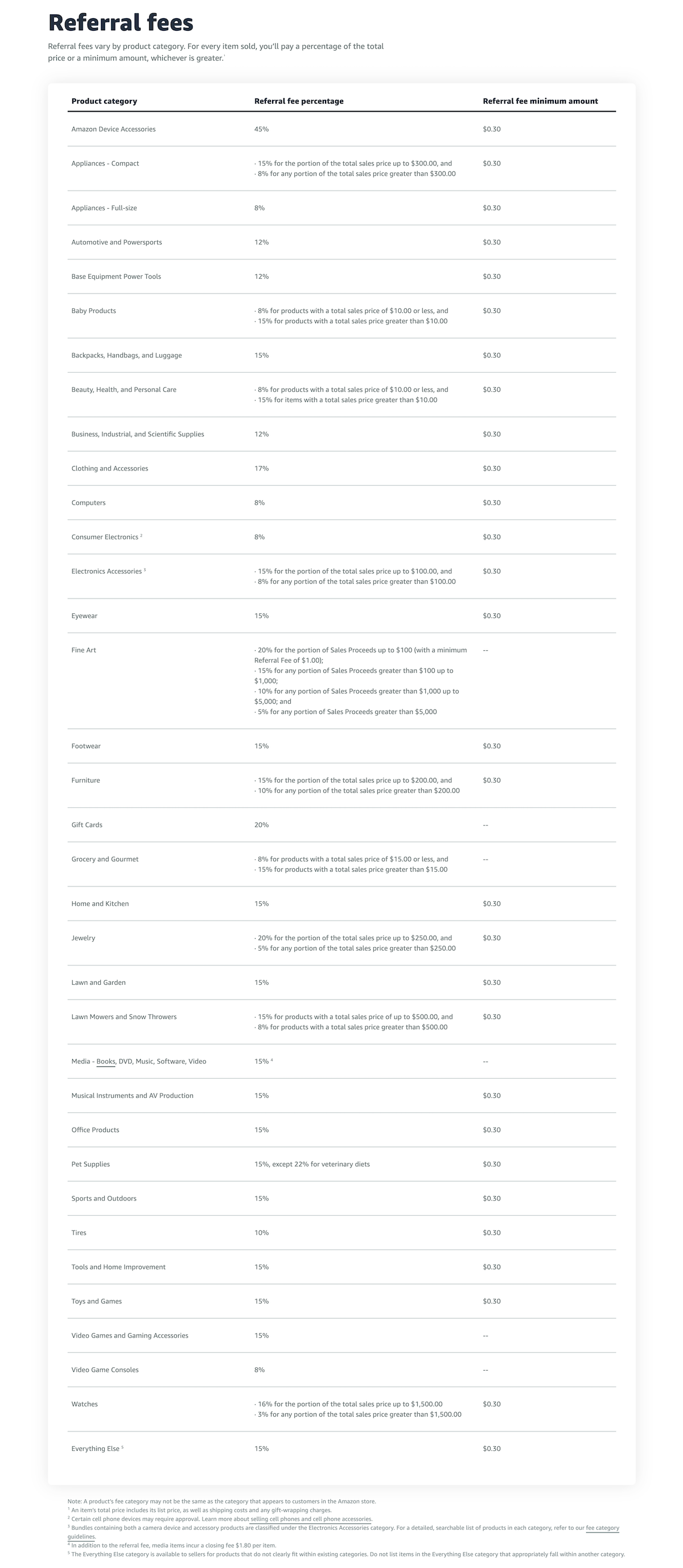
For instance, let’s consider you’re selling a novelty kids toy that falls under the ‘Toys and Games’ category, which typically carries a 15% referral fee. If your suitcase sells for $50, Amazon immediately takes $7.50 (15% of $50) off the top, affecting your profit margin right out of the gate.
Understanding these fees is crucial because they directly impact your bottom line and your ability to price products competitively while still maintaining a healthy margin.
That’s where the FBA calculator comes in:
Amazon’s FBA Revenue Calculator
To hone in on a more accurate estimation of your fees, Amazon offers the FBA revenue calculator to crunch the numbers and forecast potential profits.
Here’s how it works:
- Locate the ASIN (Amazon Standard Identification Number) of a product similar to the one you’re planning to sell.
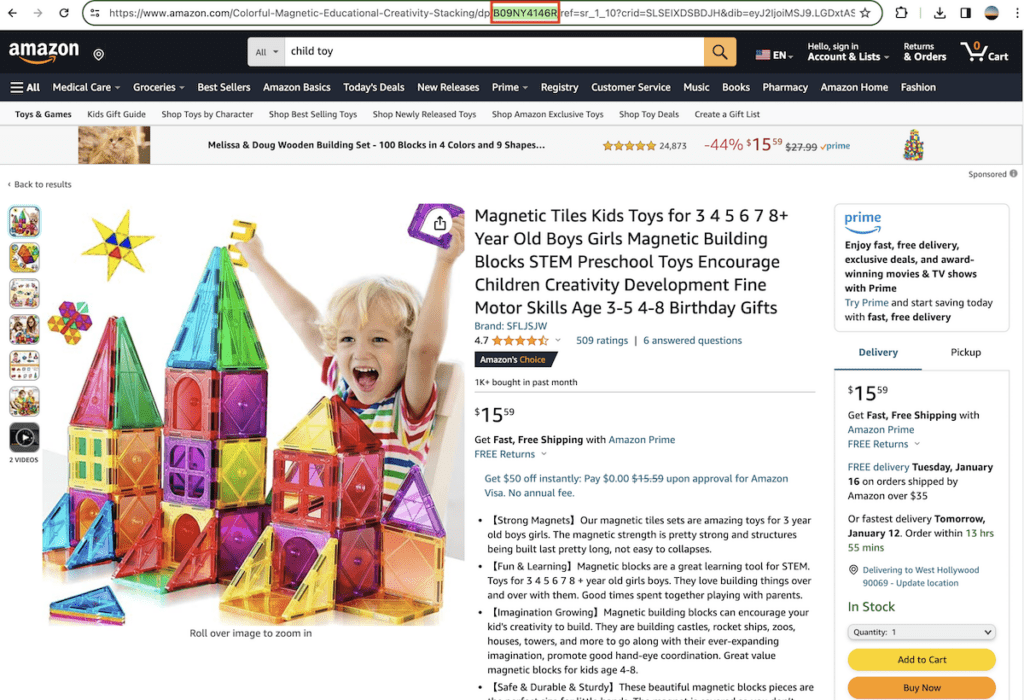
- Input the ASIN into the revenue calculator. Keep in mind: while this tool provides a solid estimate, it won’t be 100% accurate if your product differs in size or weight from the one you’re comparing it to, as Amazon fulfillment fees vary based on these factors.
- Input the item price: The calculator will spit out a breakdown of the costs associated with storing, distributing, and delivering the particular product through Amazon FBA. For example, suppose you input an item price of $15.59. In that case, the calculator will itemize Amazon’s charges and present you with a net profit and margin at that price – $6.23 profit per product and a 39.93% margin for Amazon fulfillment for this example.
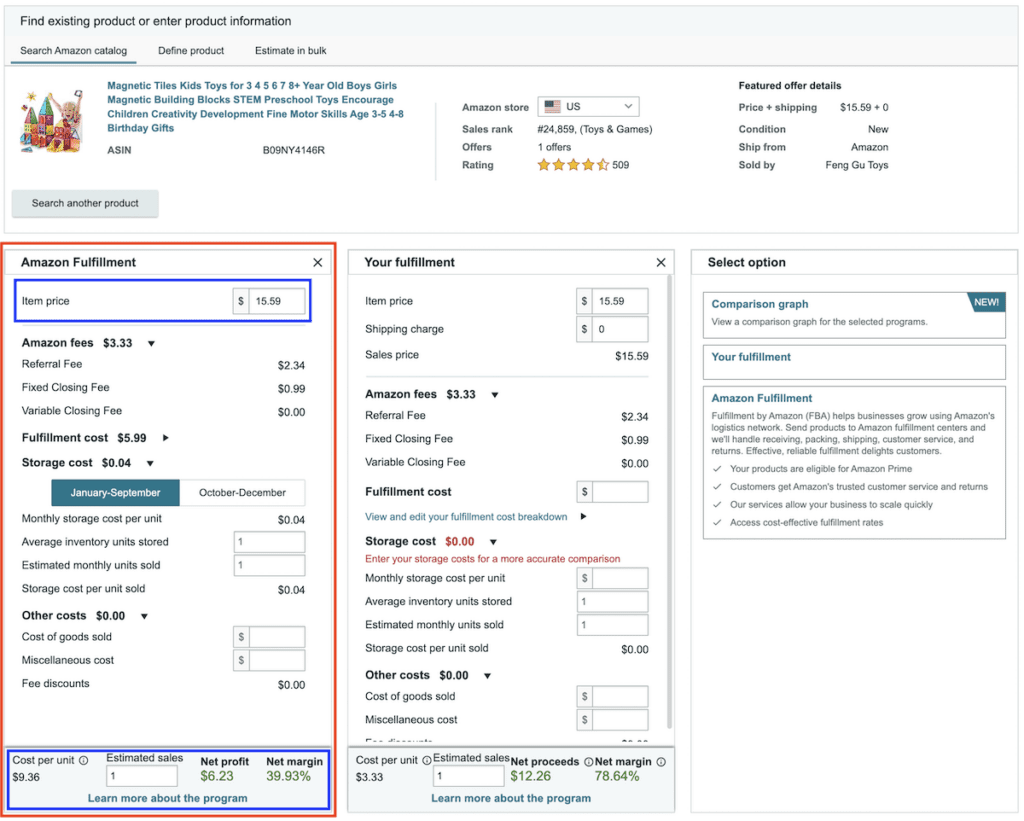
- Input the cost of goods: Now we need to ensure all of the other costs associated with selling the product are accounted for in the ‘other costs’ section. Here, the cost to acquire the product is $2, reducing the actual profit per item to $4.23 at a 27.11% margin – a stark difference from the initial, more appealing figure.
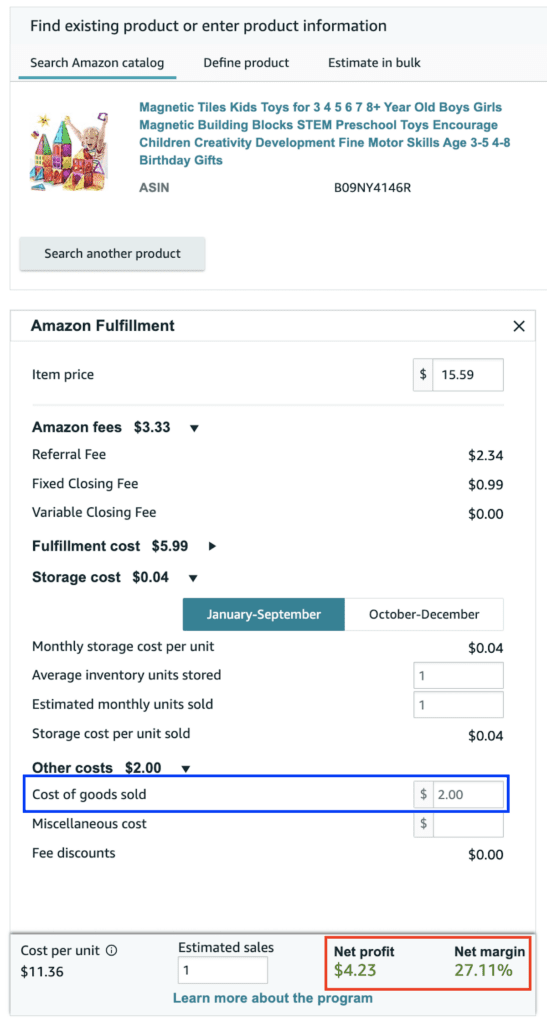
Other Costs for Amazon FBA Sellers
Calculating your Amazon FBA profit accurately doesn’t end with understanding Amazon’s fees. There are several other costs and factors that you need to consider, which can sometimes be the most challenging part of the equation.
These costs are often based on a monthly basis and require you to estimate the number of sales you’re going to make to determine profitability accurately.
Shipping product to Amazon

One of the significant costs for any Amazon seller is the shipping fees from your manufacturer to Amazon’s fulfillment centers.
These costs can vary widely depending on the size and weight of your products, the distance they need to travel, and the shipping method you choose. It’s crucial to negotiate favorable shipping terms with your suppliers or find cost-effective logistics solutions to minimize these expenses.
Securing a free online quote from a freight forwarding company can give you a solid indication of the costs and shipping methods available to you.
Cost of returns
Another cost to consider is the fees associated with returns. While it’s challenging to predict the exact number of returns you’ll receive, it’s a given that not all sales will go smoothly.
While Amazon will process returns on your behalf as an FBA seller, you will be required to remove the returned stock if it can’t be resold and cover the shipping costs associated with that, eating into your profits. Having a solid returns management strategy can help mitigate these costs.
Marketing costs
Marketing is essential to get your product in front of potential customers, especially when launching a new product on Amazon.
When it comes to Amazon FBA, the main marketing cost for most sellers is of course PPC (pay-per-click) advertising on the Amazon platform. What’s for sure is that whether it’s PPC or external marketing efforts, you’ll need to allocate a budget to promote your products and drive sales – an additional cost that needs to be factored into your profit calculations.
Business running costs

Lastly, we can’t overlook the standard costs associated with running a business. Often an oversight, these include expenses like insurance, taxes, salaries, and SaaS subscriptions. And can soon creep up on you if not monitored and accounted for.
For instance, investing in pay-as-you-sell insurance can provide a flexible and cost-effective solution for protecting your business without overburdening your finances or causing the stress of being over- or under-insured.
By taking all these additional costs into account, you can more accurately estimate product costs to input into the revenue calculator, creating a truer reflection of the profitability of new products.
Improve Your Amazon Profitability
Estimating your potential profitability is the first step to being successful with any new product launch on Amazon. Looking for the next steps? Check out our article on how to improve your cash flow for more tips on thriving in your Amazon business.

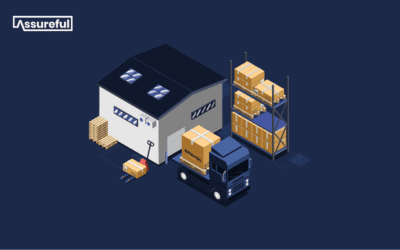


0 Comments